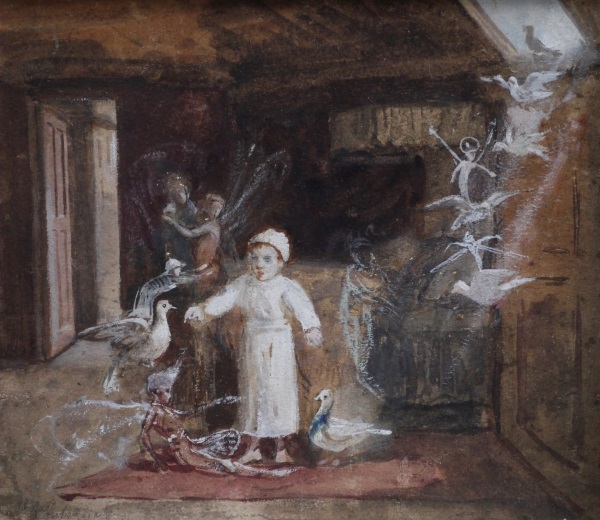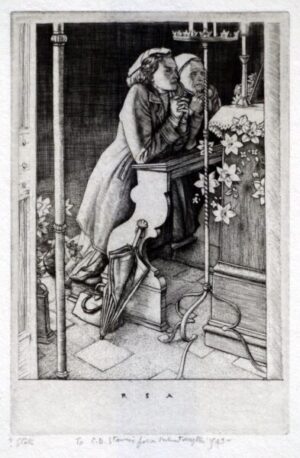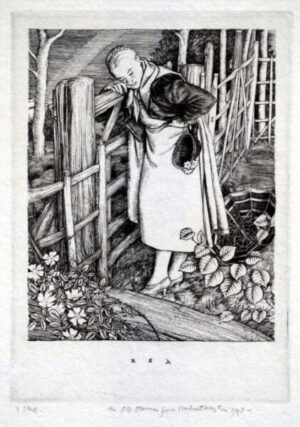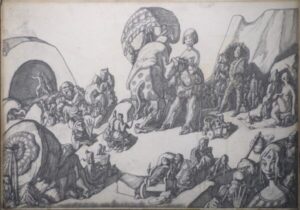Description
The board to which the watercolour was originally attached had the title “Waking Dreams” with the Langham Sketching Club written in pencil (under the mount).
The Langham Sketching Club which is now known as the ‘London Sketch Club’ was founded in 1838. Artists met every Friday evening during the winter months when each member made a two-hour sketch from one or two given subjects. The sketches were then fixed around the walls and “received much criticism”; after which supper was served and the rest of the evening devoted to talk and mutual entertainment.
Fitzgerald is mentioned in the history of the London Sketch Club by David Cuppleditch and was said to be one of the dissenters who left the Langham Club after a row about food-hot or cold was the issue, and the ‘hots’ including Fitzgerald, known as ‘Fairy’, Sir James Linton, Phil May, Cecil Aldin and others left the Club in 1898. His last wish was to die in the Savage Club. As Aaron Watson remarked, “It was a weird idea; but in his latter days he came to the club every Saturday to die and only missed his expectation by three or four days. John Anster Fitzgerald was given the extraordinary favor of a pension by the Royal Academy.
Although this work is not dated it has been said that all Fitzgerald’s fairy pictures were painted from the 1850s and 1860s, and that a small group of ‘dream’ pictures of sleeping figures date from the 1850s.
Don Grant, (research fellow, London Sketch Club) kindly emailed us an image of a painting from their archives depicting various members of The London Sketch Club from 1902. In the picture Fitzgerald (No.4) is seen happily musing over one of his sketches.



